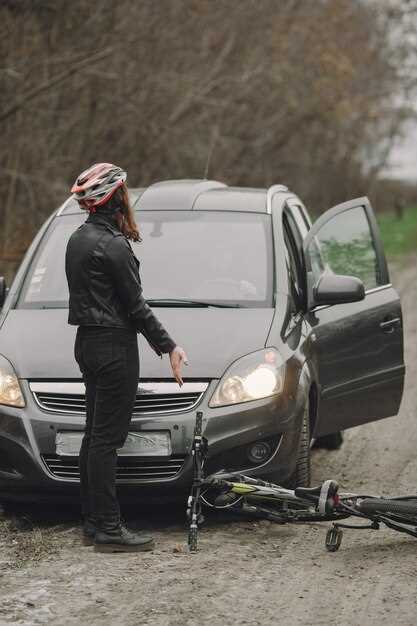
Biking is not only a popular mode of transportation but also an enjoyable and environmentally friendly activity. However, it comes with its set of challenges, particularly when it comes to navigating road conditions. Understanding these conditions is vital for ensuring your safety while cycling.
Common road hazards such as potholes, debris, and uneven surfaces can pose significant risks for cyclists. Being aware of these obstacles and preparing for them can greatly reduce the chances of accidents and injuries. Furthermore, environmental conditions like poor visibility due to rain or fog necessitate extra caution and preparedness.
In this article, we will explore practical strategies for avoiding these common road hazards while biking safely. From recognizing potential dangers on your route to equipping yourself with the right gear, each tip will help you ride more confidently in various conditions. Stay safe, stay informed, and enjoy the ride!
Identifying and Navigating Potholes

Potholes are one of the most common road hazards that bikers encounter, especially in poor road conditions. They can cause accidents or serious damage to your bike if not navigated properly. Identifying potholes early is crucial for safe biking. Look for signs such as uneven pavement, water accumulation, or cracks in the road, which can indicate underlying issues.
When approaching an area prone to potholes, such as roads with a history of wear and tear or those recently impacted by weather changes, maintain a safe speed and keep a lookout for any irregularities. If you spot a pothole, evaluate its size and depth before deciding the best way to avoid it. If it’s too large to swerve around safely, a controlled approach may be necessary; slow down and go over it carefully to reduce the impact on your bike.
Additionally, be aware of your surroundings. Other vehicles and cyclists may also be avoiding potholes, leading to sudden movements or collisions. Signal your intentions to those around you and ensure there is enough space to maneuver safely. Understanding road conditions and practicing defensive biking will help you navigate potholes effectively and keep your ride enjoyable.
Evaluating Road Conditions Before Your Ride
Before embarking on your biking journey, assessing road conditions is crucial for ensuring safety and a smooth experience. Understanding the terrain and any potential obstacles can greatly enhance your ride and reduce the risk of accidents.
Start by observing the road surface. Look for signs of wear and tear, such as cracks, uneven patches, or faded markings. Smooth surfaces are preferable, as they provide better traction. Take note of any potholes, as these can pose a significant hazard. Riding over a pothole can not only lead to loss of control but may also damage your bike’s tires or frame.
Additionally, check for debris such as gravel, fallen branches, or debris from construction sites. These can create unexpected challenges and may lead to mishaps if not accounted for. On shared paths, be cautious of pedestrians and other cyclists who might not be aware of your presence.
Weather conditions also play a vital role in road safety. Rain can make roads slick, and strong winds might affect your balance. Before heading out, make sure to consider these environmental factors and adjust your route if necessary.
By thoroughly evaluating the conditions of the roads before your ride, you can better prepare for any challenges that may arise and ensure a safer biking experience.
Utilizing Bike Safety Gear for Hazard Protection

When biking under various conditions, utilizing the proper safety gear is paramount for minimizing road hazards and ensuring a safe riding experience. Helmets are the most fundamental piece of equipment; they protect the head during falls or collisions. Selecting a helmet that meets safety standards and fits properly is crucial for optimal protection.
In addition to helmets, wearing reflective clothing significantly improves visibility, especially in low-light situations such as dawn or dusk. High-visibility colors and materials can make a cyclist much easier to see, reducing the risk of accidents caused by other road users not noticing them.
Gloves serve a dual purpose; they enhance grip on the handlebars and provide cushioning, which is essential for comfort over long distances. Moreover, they can protect hands in case of an accident, preventing injury from abrasions.
Padded shorts and appropriate footwear contribute to overall comfort and injury prevention. Padded shorts reduce chafing during long rides, while proper shoes enhance pedaling efficiency and provide necessary support. Consider using shoes compatible with clipless pedals for improved control and stability.
Illuminated lights and reflectors are essential when biking in darker conditions. Front and rear lights make cyclists visible to vehicles and make navigating road hazards easier. Likewise, reflectors on the bike and gear further increase visibility, ensuring cyclists are seen from various angles.
Finally, maintaining a proper bike maintenance routine is vital. Regularly checking brakes, tires, and gears can help prevent malfunctions that may lead to accidents on the road. By utilizing appropriate safety gear diligently, cyclists can significantly mitigate risks associated with biking in diverse conditions.












